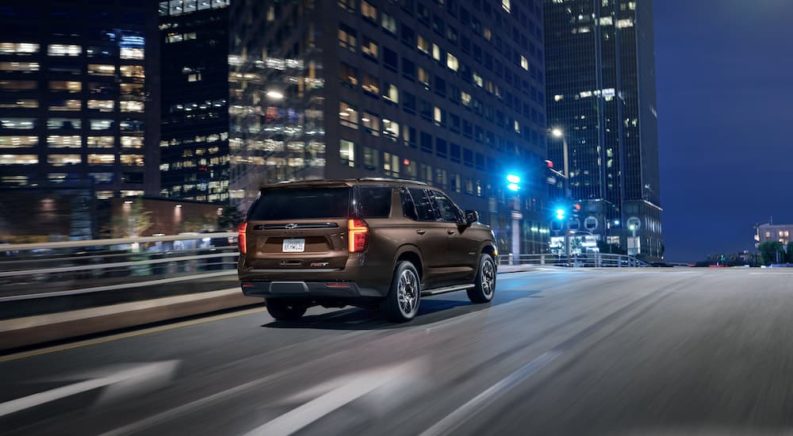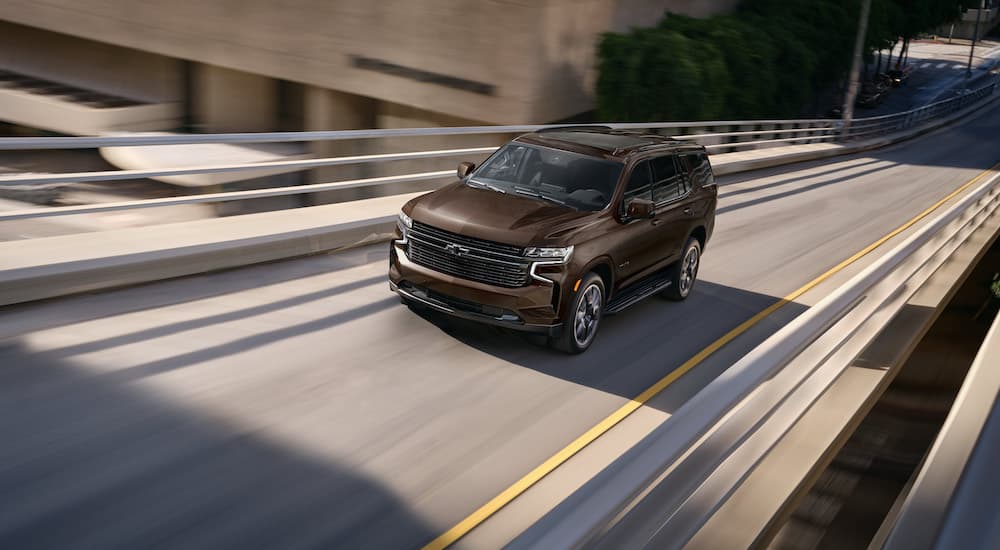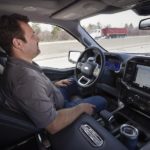With the news that some higher trim levels of the 2023 Chevy Tahoe will include Chevrolet’s Super Cruise, it’s interesting to ponder where the automotive industry will go from here. We’ve talked about self-driving cars, even flying cars, but so far, the best we have is the cruise control option, which is now over one hundred years old, though, of course, there have been updates throughout the years. The self-driving car has a long way to go, but let’s look at the evolution of cruise control and see if the self-driving car is the ultimate end goal.
How Does Cruise Control Work?
Throughout its history, cruise control has functioned in a few different ways – older vehicles were likely to be set up with a cable system that allowed for adjustment of the throttle, which is what maintained the speed instead of the driver and gas pedal. In newer vehicles, the system is electronic and uses a wired system to maintain speed, and it has been found to be more reliable.
Though many vehicles come with cruise control, some drivers choose not to use it, and some for specific occasions only. Some cruise control systems require setting a speed, and others will assume the speed the vehicle is already going. Stopping and starting cruise control can be as simple as pressing a button, making this one of the simplest ways driving has been made easier, at least according to some drivers.
1900s Wilson-Pilcher Cruise Control
The very first iteration of cruise control arrived in the form of a lever on the steering column and was only capable of maintaining the speed set by the driver, whether fast or slow. While the concept had been floating around for over a hundred years previously, linked to the steam engine, Wilson-Pilcher was the first company to connect cruise control with automobiles. It wasn’t quite as revolutionary as one might expect, but it was the first step toward figuring out ways to ease the job of the driver.
We’ve been driving around with some form of cruise control or another for over one hundred years now. It’s incredible to think about how all of that time, people have continued to tinker with cruise control to see what it can do better and how. The entire original system would be overhauled, however, with the entry of Ralph Teetor’s “Speedostat” around thirty years after it arrived on the market, and of course, that would eventually lead to further improvements as time went on and technology became more standard.
1940s Ralph Teetor’s “Speedostat”
Ralph Teetor’s entry into the automotive industry was serendipitous, to say the least. Teetor worked for Chrysler as a mechanical engineer, fixing problems that had previously stumped Chrysler’s other workers, and inventing what he called the “Speedostat,” which was more like modern cruise control than the lever/steering column combination that came about in the early 1900s. Teetor, like many inventors before him, was annoyed with something, and out of that annoyance came an invention that has changed the world as we know it.
According to Teetor, who was blind, his lawyer would drive him around whenever he needed a lift. Unfortunately for Teetor, his lawyer was not the sort of person who could drive and talk or listen at the same time and keep pace. This resulted in a slow-to-fast movement that nearly drove Teetor out of his mind. That became the catalyst for the patented “Speedostat” that arrived in the mid-1940s. Though it had taken a decade to perfect the system, the “Speedostat” was worth it.
Other names considered prior to “cruise control” were “Touchomatic” and “Pressomatic.” The name changed to “cruise control” when General Motors decided to include it in high-end Cadillac models. It has remained that way ever since, which is interesting because quite often, automotive brands will create similar technologies but name them differently to distinguish between brands, such as automatic braking systems, which are called things like Chevy’s Automatic Emergency Braking, Toyota’s Pre-Collision System, and Honda’s Collision Mitigation Braking System.
Modern Cruise Control
Cruise control as we know it arrived in the 1990s, and I remember what a phenomenon it was at the time, along with the fears of how it could be dangerous. My grandmother swore up and down that the cruise control on her Ford pickup got stuck, and that’s what happened when her truck hit a tree. Some people avoided cruise control and even now refuse to use adaptive cruise control because they fear something going awry. Although it should be noted that some studies have shown drivers are apt to rely on cruise control too much and can be prone to speeding, there is no evidence that cruise control gets stuck or is otherwise unreliable.
My father used cruise control in his Ford pickup and never had a problem with it, and my partner uses it because it helps him avoid speeding. While cruise control can be dangerous in that we may rely on it a little too much, it’s also incredibly helpful when traveling long distances, especially for those who find driving for hours at a time painful due to cramped muscles and lack of space to move around.
Along with modern cruise control came a wealth of other features that paired well with making things easier for the driver. Sonar, cameras, radar, and other systems were installed alongside the cruise control, and many of these are now considered standard even on base trim models. But where do we go from here?
The 2023 Chevy Tahoe’s “Super Cruise”
What exactly is the difference between the adaptive cruise control features offered by other brands and the Chevrolet Super Cruise? The 2023 Chevy Tahoe is slated to offer this available technology in two of its upper trim levels and promises a “hands-free” driving experience.
Practically speaking, the Super Cruise option is available and usable on over 200,000 miles of roads in North America. So, if you own a 2023 Tahoe, you have access to those roads, and conditions are clear, you may be able to go for a long stretch of the highway without having to glue your hands to the steering wheel. Alertness is still required, and you will have to pay attention to the road around you and other drivers, but you won’t have to multi-task quite as much. Instead, you can simply enjoy the ride in your comfortable new vehicle.
The Future of Cruise Control
Cruise control has been around for many decades now, and if progress is to be made, technology must continually improve. Though there are still individuals who worry about cruise control and how it affects drivers, there are others who see the benefits of not only regular cruise control but adaptive cruise control and Super Cruise. The new systems utilize other safety and technology features such as cameras to measure the distance between your vehicle and the one in front of you and match their pace accordingly while maintaining a safe distance, making driving easy.
Does this mean we’ll get self-driving and flying cars in large quantities in the near future? Not likely. There are still some problems to resolve, such as inclement weather that can mess with sensors and people needing to understand where the line is for how autonomous adaptive cruise control actually is, but we are heading in that direction. Perhaps in the future, we’ll find it quaint and nostalgic to have a vehicle that can be driven just by human hands and feet.






